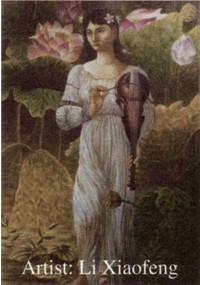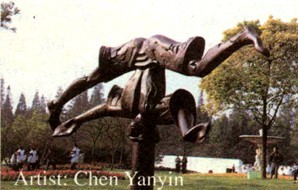人教高中英语高二上UNIT3-4
搜索关注在线英语听力室公众号:tingroom,领取免费英语资料大礼包。
(单词翻译)


We see art everywhere around us. In public parks, city squares, shopping streets and public buildings, we find modern art objects on display. Classical1 art, such as valuable paintings, precious2 statues and other fine arts, usually ends up in the collections of museums, companies or rich people. Although we can see some of it in museums, those other art collections are not open to the public.
Both art and architecture3 have a history of ages. All forms and ways of expressing beauty have been explored. In the case of architecture, many buildings that were designed in the past have proven to be beautiful and served their purposes. Governments and companies could save millions of dollars by building or copying designs of architecture of buildings from the past. There are still many designs for buildings made by famous architects4 that were never realised. Besides, some people find modern architecture ugly. So why should we pay a lot of money to architects for designing new buildings?
The same holds for modern art, both paintings and statues. Many art objects that have been created in the past are now covered by dust in storerooms. These storerooms contain enough art to decorate all public buildings and other public places. There is no need to create more art, and as with modern architecture, many people find new art difficult to understand or appreciate.
Given these facts, why are architects and artists asked to create new art works6? And why are we interested in creating new art and architecture, instead of using or copying what was made in the past? The answers to these questions have to do with the function of art in society today.
First of all, the function of art is to decorate. By placing art works in parks and hanging paintings or drawings on the walls we make our living environment more beautiful. When our eyes move across an empty wall they will for a few moments rest on a painting or other kind of work hung there. It is a moment of comfort and makes people feel good. Sometimes, paintings are not beautiful at first glance. But looking at them and thinking about them for a while or repeated viewing will help us to learn to appreciate them.
Another function of art is enriching7 real life, as art is part of everyday life. Art helps people to learn to think creatively. In art things are not always what they seem to be. Art objects in a park are sometimes funny. Very often you can hardly tell what they are. People need such creative moments. It helps them to balance their minds. When we see art like that all around us, it helps to make life more interesting.
Finally, art is often seen as a way to instruct the audience. Statues of heroes from the past remind us of our history. Paintings and other art objects can also help us to realise5 which goals we should set for ourselves and inspire us in our everyday work.
Because ideas about society change and every period of time has its own taste, there is always a need for new art. We can still appreciate art works made in the past for their beauty, but they are often too valuable to be placed in public buildings. Besides, they also often need special protection8.
 收听单词发音
收听单词发音 




